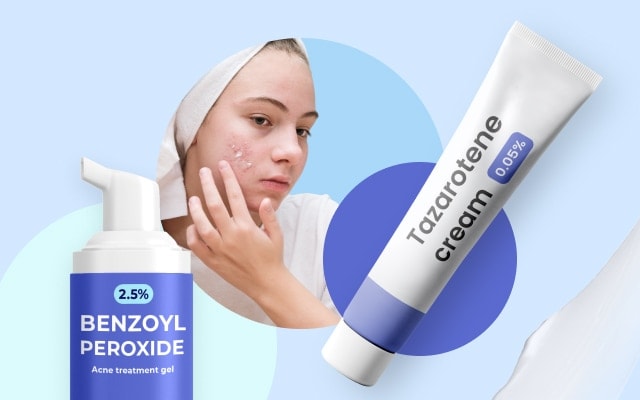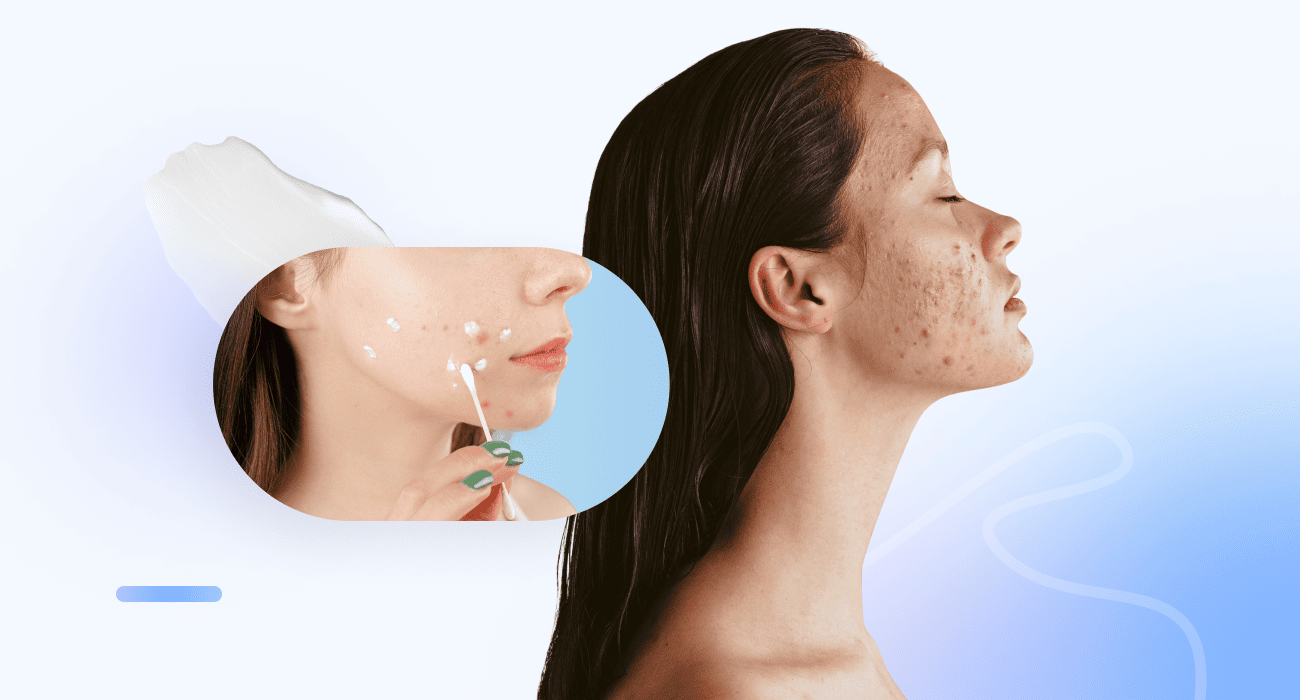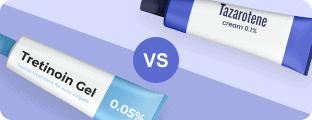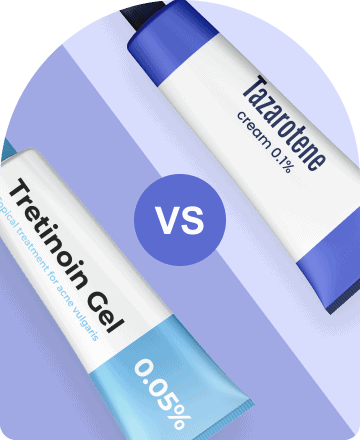Clindamycin gel for acne
Clindamycin is a topical prescription antibiotic commonly used for acne in combination with other acne-fighting ingredients. Keep reading to find out how it can help you get clear skin.
Table of Content:
What is Clindamycin used for? | Clindamycin and benzoyl peroxide | Clindamycin and tretinoin | How to use clindamycin? | How to get Clindamycin? |Clindamycin Side-Effects | Who should use Clindamycin? | Who cannot use Clindamycin? | Brand names
Our commitment to producing high-quality content:
The information presented in this article is based on scientific research and the professional advice of our Content Medical Reviewers, who are experts in the field of Dermatology. How we write our content →
What is clindamycin and what is it used for?
Clindamycin is a topical prescription antibiotic that stops bacteria from growing1 and helps control acne2. It is usually prescribed in combination with other acne medications.
According to a clinical study, Topical 1% percent clindamycin reduced acne in people with moderate inflammatory acne after patients used it twice daily for eight weeks3.
Can you buy clindamycin over the counter?
No, clindamycin is not sold over the counter. You need a prescription from a virtual healthcare provider to buy clindamycin creams and gels.
How to get a clindamycin prescription for acne?
You can request a clindamycin prescription via Miiskin. You just need to answer some questions, upload some photos of your skin and your assigned dermatologist will write you a prescription in less than 2 days.
Clindamycin and benzoyl peroxide gel
The combination of benzoyl peroxide and clindamycin works very well in controlling acne because it kills the bacteria that causes acne and helps reduce skin inflammation.
When clindamycin is used alone, the acne bacteria may develop resistance quickly, but benzoyl peroxide kills the resistant bacteria4.
Clindamycin and tretinoin gel
The combination of clindamycin and tretinoin is also a very effective way to combat acne because it kills the bacteria that cause acne and keeps patients’ skin pores clear. It also helps reduce the number of pimples and helps them heal faster.
Clindamycin is an antibiotic that stops the growth of bacteria that cause acne, and tretinoin is a retinoid that affects skin cells’ growth.
A clinical study revealed that applying a combination of Clindamycin and Tretinoin for 12 weeks helped reduce the appearance of acne with minimal side effects5.
How to use clindamycin?
Dr. Carolina Fernandez says that clindamycin should be applied twice daily. Some formulations, like foams, may contain alcohol stinging or burning when applied to the skin.
You should apply this medication on the whole area affected by acne, not just to the pimples themselves, as this will prevent new spots from appearing6.
You should not discontinue the use of clindamycin if you start seeing results. Antibiotics should always complete a full course to ensure the medication kills the bacteria. Stopping too early can increase your risk for antibiotic resistance.
Dr. Fernandez says that antibiotics like Clindamycin are only used as a short-term treatment. You will usually be instructed to apply it for 3 to 4 months in combination with benzoyl peroxide or a retinoid7.
After this time, your healthcare provider may recommend you stop clindamycin but continue using benzoyl peroxide or your prescription retinoid.
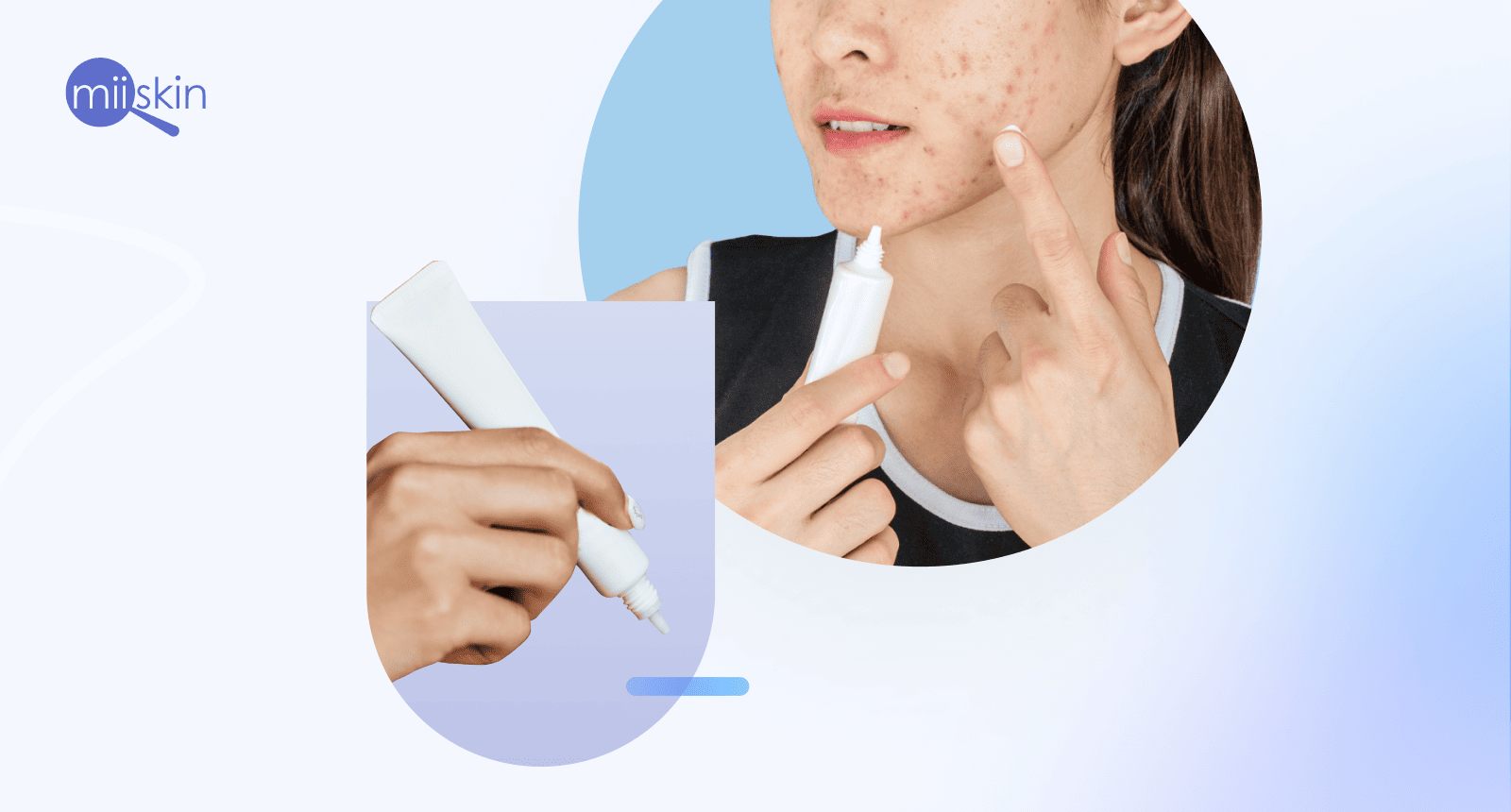
How to apply clindamycin
- Always wash your hands both before and after using the medication.
- Cleanse your face with lukewarm water and a mild soap before applying.
- Once washed, gently dab your face dry.
- Apply a small, pea-sized quantity on the problem area, then lightly rub in until fully absorbed.
- Avoid washing your face more than twice a day, as excessive cleansing might dry your skin and worsen acne conditions.
Clindamycin formulations:
Topical clindamycin is available as cream, lotion, gel, pads, foam and solution.
Side effects of using clindamycin gels
Dryness, oily skin, redness, burning, itching, or skin peeling may occur. Tell your doctor if these side effects last long or get worse6.
Who can use clindamycin gels and creams?
Patients with mild to moderate acne over 12 years of age.
Who cannot use clindamycin solutions?
Patients with hypersensitivity cannot use topical clindamycin or lincomycin. Patients who are pregnant or breastfeeding should not use this medication. Remember that during pregnancy and lactation there are many medications that are contraindicated.
Clindamycin can also not be used by patients with a history of inflammatory bowel disease or history of antibiotic-associated colitis.
Brands names of clindamycin gels and creams
- Clindagel
- ClindaReach
- Clindacin Pac
- Z-Clinz
- Cleocin T
- Clindacin P
- ClindaMax
- Clindets
- Evoclin
- Clinda-Derm
Lee este artículo en Español ¿Para qué se usa la clindamicina en gel, crema y pomada?
Subscribe to newsletter!
Unlock the secrets to a flawless complexion with our exclusive newsletter. Discover effective acne treatments, expert advice, and skincare tips. Subscribe now for a radiant future!
Article References:
1 https://my.clevelandclinic.org/health/drugs/19438-clindamycin-topical-lotion
2 https://www.mayoclinic.org/drugs-supplements/clindamycin-topical-route/description/drg-20063064
3 https://onlinelibrary.wiley.com/doi/abs/10.1111/ijd.12002
4 https://www.mayoclinic.org/drugs-supplements/clindamycin-topical-route/description/drg-20063064
5 https://www.mayoclinic.org/drugs-supplements/clindamycin-topical-route/description/drg-20063064
6 https://www.webmd.com/drugs/2/drug-1465/clindamycin-phosphate-topical/details
7 https://pubmed.ncbi.nlm.nih.gov/12847739/
8 https://jddonline.com/articles/observational-study-of-clindamycin-phosphate-and-tretinoin-gel-for-the-treatment-of-acne-S1545961619P0328X/
9 https://www.mayoclinic.org/drugs-supplements/clindamycin-topical-route/proper-use/drg-20063064
10 https://www.mayoclinic.org/drugs-supplements/clindamycin-topical-route/proper-use/drg-20063064
11 https://www.aafp.org/pubs/afp/issues/2017/0601/p740.html
12 https://www.medicines.org.uk/emc/product/3844/smpc



